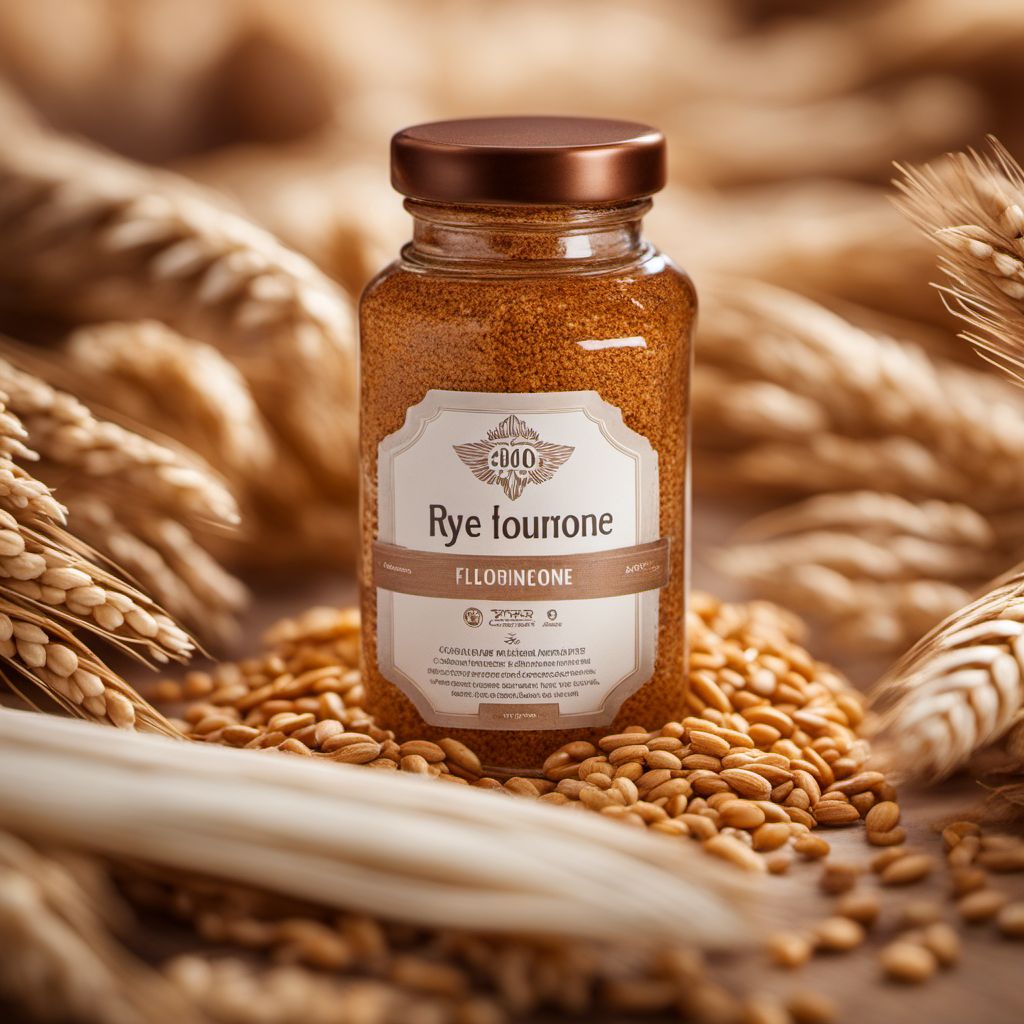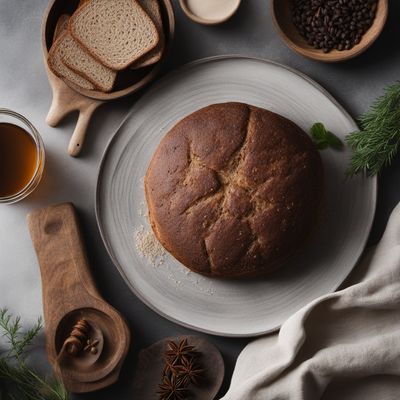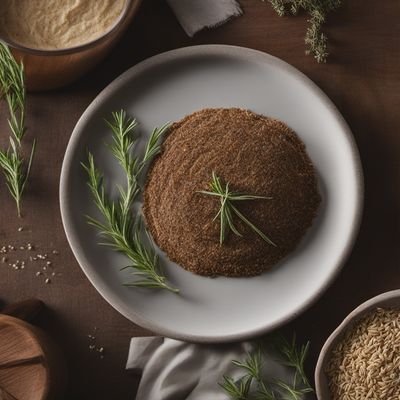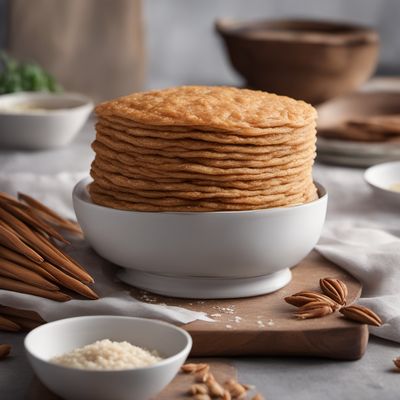
Ingredient
Rye flour
Hearty Grain
Rye flour has a distinct earthy flavor with a hint of tanginess and a dense texture. It ranges in color from light to dark, depending on the milling process. It is often used in combination with wheat flour to create breads, crackers, and pastries with a rich, complex taste. Rye flour is known for its high fiber content and is a good source of vitamins and minerals.
Origins and history
Rye has been cultivated for thousands of years and has deep roots in European culinary traditions. It has been a staple grain in regions with colder climates, such as Scandinavia, Germany, and Russia. Rye bread, a popular product made with rye flour, has been a dietary staple for centuries in these regions. Rye's hardiness and ability to grow in poor soil conditions made it an essential crop in areas where other grains struggled to thrive.
Nutritional information
Rye flour is a good source of dietary fiber, providing approximately 9 grams per 100 grams. It is also rich in vitamins and minerals, including manganese, phosphorus, and magnesium. Rye flour is lower in gluten than wheat flour, making it a suitable option for individuals with gluten sensitivities.
Allergens
Rye flour may contain gluten, which can trigger allergic reactions in individuals with gluten intolerance or celiac disease.
How to select
When selecting rye flour, opt for brands that offer stone-ground or whole grain options for maximum nutritional benefits. Look for a fine texture and a fresh, nutty aroma. Store rye flour in an airtight container in a cool, dark place to maintain its freshness and prevent it from going rancid.
Storage recommendations
To keep rye flour fresh, store it in an airtight container in a cool, dry place, away from direct sunlight. It is best used within 6 months to maintain its flavor and quality. Whole grain rye flour has a shorter shelf life compared to refined rye flour due to its higher oil content.
How to produce
Rye can be grown in home gardens or small-scale farms with proper soil preparation and regular watering. It requires well-drained soil and cool temperatures. Sow the seeds in early spring or late summer and harvest when the grains are fully matured and dry.
Preparation tips
Rye flour is commonly used in bread-making, particularly for traditional rye breads like pumpernickel, sourdough, and Swedish limpa. It can also be used to make crackers, pancakes, muffins, and cookies. Rye flour adds a distinct flavor and texture to baked goods, making them heartier and more flavorful.
Substitutions
Whole wheat flour, spelt flour, or barley flour can be used as substitutes for rye flour. Each of these alternatives will provide a different flavor and texture to the final product, but they can still yield delicious results.
Culinary uses
Rye flour is widely used in Northern and Eastern European cuisines, particularly in countries like Germany, Sweden, Finland, and Russia. It is a key ingredient in traditional dishes like German rye bread, Swedish rye crispbread, and Finnish rye porridge.
Availability
Rye flour is commonly available in grocery stores and specialty food markets, especially in regions with a strong European influence. It is widely cultivated and consumed in Northern and Eastern European countries.
More ingredients from this category
Recipes using Rye flour » Browse all

Lithuanian Rye Bread
Hearty Harvest: Lithuanian Rye Bread Recipe

Icelandic Flatkaka with a Twist
Savory Delight: Reinventing Icelandic Flatkaka

New Nordic Fish and Chips
Nordic Twist on Classic British Fish and Chips

Karjalanpiirakka - Finnish Rice and Rye Pastry
Savory Delight: Finnish Rice and Rye Pastry

Estonian Rye Damper
Hearty Estonian Rye Damper: A Taste of Traditional Estonian Cuisine

Kiritanpo with a Nordic Twist
Nordic-Inspired Kiritanpo: A Wholesome Fusion of Japanese and Scandinavian Flavors

Schleswig-Holstein-inspired Mini Pizzas
North Sea Delights: Schleswig-Holstein-inspired Mini Pizzas

South Sudanese Spiced Ruislimppu Bread
Savory and Spiced Ruislimppu Bread with a South Sudanese Twist

Kneippbrød - Norwegian Whole Grain Bread
Hearty Harvest: A Nutritious Norwegian Whole Grain Bread

Krpice sa zeljem (New Nordic Style)
Nordic-Inspired Cabbage Pasta

Vegetarian Karelian Pies
Savory Delights: Vegetarian Karelian Pies - A Finnish Culinary Gem

Devon-style Dark Bread
Devonshire Delight: A Twist on Dark Bread



